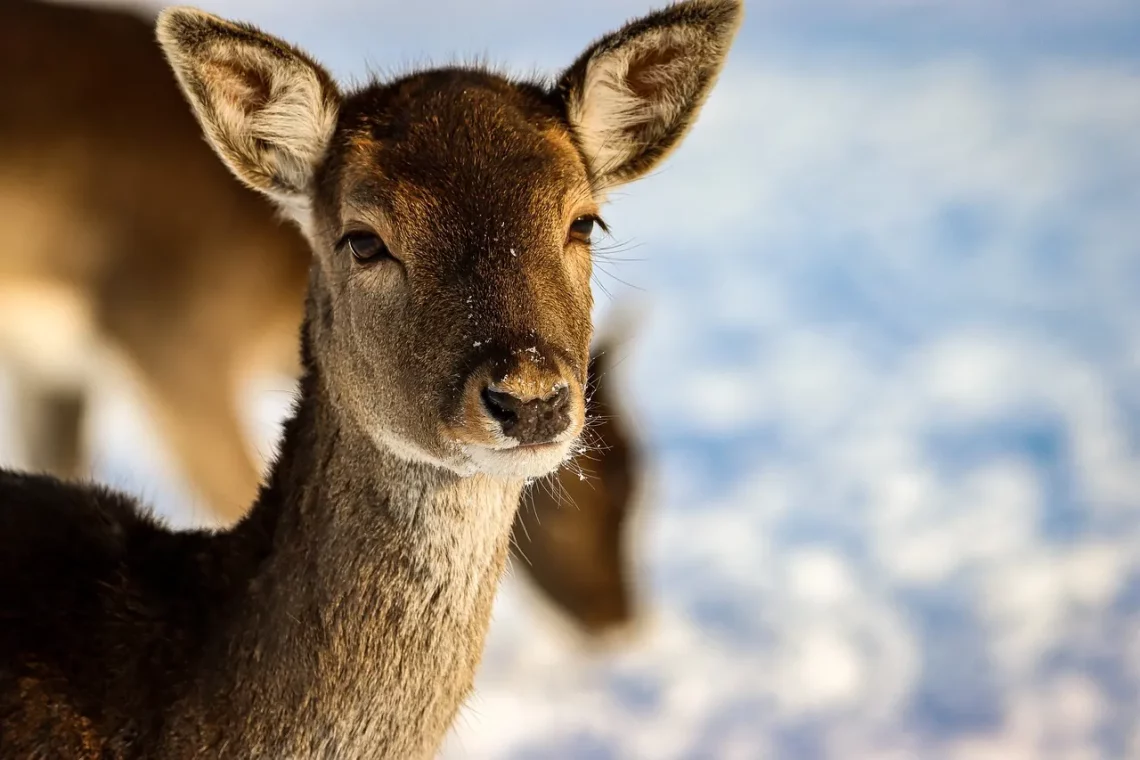
Do Deer Eat Celery? Discover the Truth About Their Diet
Deer are one of the most graceful and adaptable animals found in various ecosystems around the world. Often spotted in woodlands, fields, and even suburban areas, these herbivores play a crucial role in their habitats. With a diet that primarily consists of a range of plant materials, deer are known to consume grasses, leaves, fruits, and various types of vegetation. However, there is often curiosity surrounding their dietary preferences, especially when it comes to specific foods that might not be native to their typical habitats.
Celery, a common vegetable in many households, often raises questions about its suitability for deer. While it is widely consumed by humans, it is essential to understand whether this crunchy, fibrous stalk is a potential food source for deer. The inquiry into whether deer eat celery can reveal much about the animal’s dietary habits, nutritional needs, and how they interact with their environment. By examining the natural diet of deer and their foraging behaviors, we can gain insights into the broader topic of deer nutrition and food preferences.
As we delve deeper, we will explore the various components of a deer’s diet, their nutritional requirements, and the factors influencing their food choices. This exploration will also include the role of different plant types in their nutrition and how human activities, such as gardening and farming, might affect their feeding patterns. Understanding these aspects is vital for wildlife enthusiasts, gardeners, and anyone interested in the natural behaviors of deer.
The Natural Diet of Deer
Deer are primarily herbivores, which means that their diet consists mainly of plant matter. In the wild, they tend to consume a diverse range of vegetation that includes leaves, twigs, shrubs, and grasses. The composition of their diet can vary significantly based on the season, habitat, and availability of food sources.
In spring and summer, deer typically have access to lush green foliage and tender shoots, which are rich in nutrients. During these warmer months, deer may favor high-protein foods like clover, alfalfa, and various leafy greens. As the seasons change and fall approaches, their diet shifts to include acorns, fruits like apples and berries, and hardier vegetation, such as bark and dried grasses, as these become more accessible.
Interestingly, deer have a unique digestive system that allows them to extract maximum nutrients from fibrous plant materials. They are ruminants, which means they have a four-chambered stomach that ferments food before it is fully digested. This adaptation enables them to break down tough plant fibers, making them efficient foragers capable of processing a wide variety of vegetation.
When it comes to specific foods like celery, it is essential to note that while deer may not actively seek out this particular vegetable, they might nibble on it if it’s readily available. However, celery does not form a staple part of their diet in natural settings. Instead, deer are more likely to consume foods that are abundant and suited to their nutritional needs in the wild.
Understanding the natural diet of deer helps in appreciating their role in the ecosystem. By consuming a variety of plants, they help maintain the health of their habitats and promote biodiversity. As we consider their eating habits, it becomes clear that deer have evolved to thrive on a diet that supports their health and well-being.
Nutritional Requirements of Deer
Just like any other animal, deer have specific nutritional requirements that must be met for them to thrive. These requirements include a balance of protein, carbohydrates, fats, vitamins, and minerals. The composition of their diet plays a critical role in their overall health, growth, and reproductive success.
Protein is essential for deer, especially during the growing season when antlers are developing and fawns are being raised. Young deer, in particular, require higher protein levels to support their growth. A diet rich in legumes, forbs, and young plants provides the necessary protein for these stages of life.
Carbohydrates are also crucial as they provide energy for daily activities such as foraging, escaping predators, and reproduction. Deer obtain carbohydrates primarily through the consumption of grasses and other carbohydrate-rich plant materials.
Vitamins and minerals like calcium and phosphorus are vital for bone development and overall health. These nutrients are typically found in various plants, but the availability of specific vitamins and minerals can fluctuate depending on the season and the deer’s habitat.
Celery, while nutritious for humans, may not offer the right balance of nutrients that deer need. It is relatively low in calories and may not provide the essential fats and proteins that deer benefit from in their typical diet. This is an important consideration for anyone interested in deer nutrition and their dietary habits.
Overall, understanding the nutritional requirements of deer is essential for wildlife management and conservation efforts. It underscores the importance of providing deer with access to a diverse and balanced diet that meets their needs throughout the year.
Factors Influencing Deer Feeding Behavior
Deer feeding behavior is influenced by a variety of factors, including environmental conditions, the availability of food sources, and the specific habitat in which they reside. Understanding these factors can provide insight into how deer make choices about what to eat and when.
One significant factor is the seasonal availability of food. As mentioned earlier, deer diets shift with the seasons. In spring and summer, deer are more likely to consume tender young plants and fruits, while in fall and winter, they may turn to more fibrous and woody materials. This adaptive behavior ensures that they can maximize their intake of nutrients throughout the year.
Another influencing factor is the presence of predators and human activity. Deer are prey animals and may alter their feeding patterns based on perceived threats. In areas with high predator activity, deer may choose to feed during dawn or dusk when they feel safer. Additionally, human activities such as farming, urban development, and landscaping can impact the availability of natural food sources. For instance, the clearing of land for agriculture may create new food sources for deer, while urban development might limit their access to traditional habitats.
Furthermore, the social structure within deer populations can also play a role in feeding behavior. Dominant individuals may have preferential access to certain food sources, while subordinate deer may need to find alternative options. This social hierarchy can lead to competition for resources, impacting the overall feeding dynamics within a herd.
In conclusion, the feeding behavior of deer is complex and influenced by a multitude of factors. Understanding these dynamics is crucial for wildlife management and conservation efforts, as it highlights the importance of maintaining healthy habitats that support diverse food sources for deer and other wildlife.
Human Impact on Deer Diet and Habitat
Human activities have significantly impacted deer populations and their diets over the years. Urbanization, agriculture, and land development have led to changes in the natural habitats of deer, often affecting their access to traditional food sources. As humans expand into rural and suburban areas, deer are frequently forced to adapt to new environments, which can lead to changes in their feeding behaviors.
Urban areas often present new food opportunities for deer, such as gardens and landscaped yards. While this may seem beneficial for deer, it can also lead to conflicts with humans. Gardens may be a source of nutritious foods, including vegetables like celery, but this can result in deer foraging in residential areas, leading to damage to gardens and landscaping.
Agricultural practices also influence deer diets. In agricultural regions, deer may take advantage of crops such as corn, soybeans, and alfalfa. However, this reliance on cultivated crops can be risky, as deer populations may become overly dependent on these food sources. This dependency can lead to overpopulation in certain areas, resulting in increased vehicle collisions and spread of diseases among deer populations.
Moreover, habitat fragmentation due to roads and urban development can isolate deer populations, making it challenging for them to access traditional food sources. This isolation can lead to decreased genetic diversity, which may affect the overall health and resilience of deer populations.
Conservation efforts aimed at maintaining healthy deer populations must consider the impact of human activities on their diets and habitats. Creating wildlife corridors, preserving natural habitats, and promoting coexistence strategies can help mitigate the negative effects of urbanization and farming on deer populations.
In summary, while deer have adapted to various environments, the impact of human activities on their diets and habitats cannot be overlooked. Understanding these dynamics is essential for developing effective conservation strategies that support both deer populations and human interests.
—
This article is intended for informational purposes only and does not constitute medical advice. If you have health concerns or questions, please consult a qualified healthcare professional for guidance.




